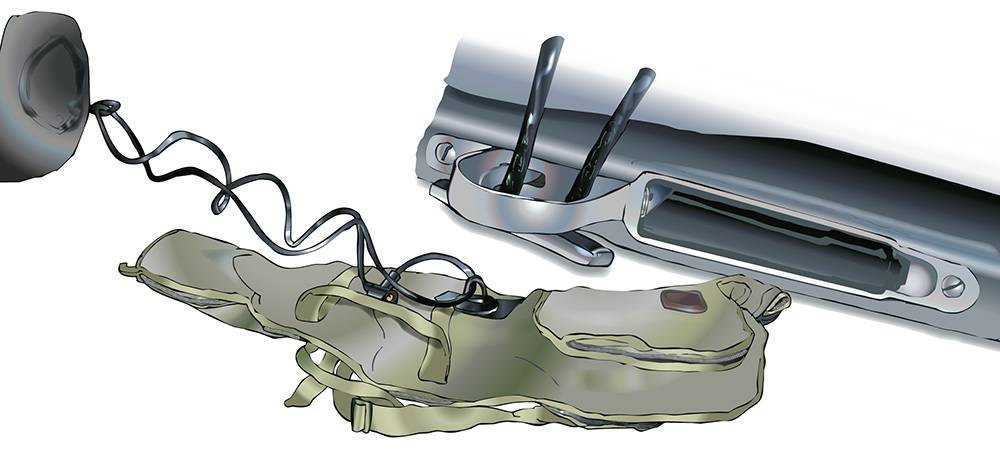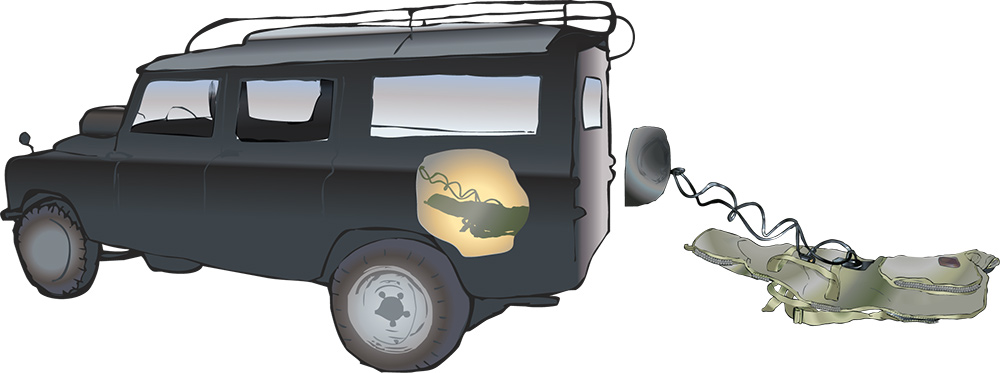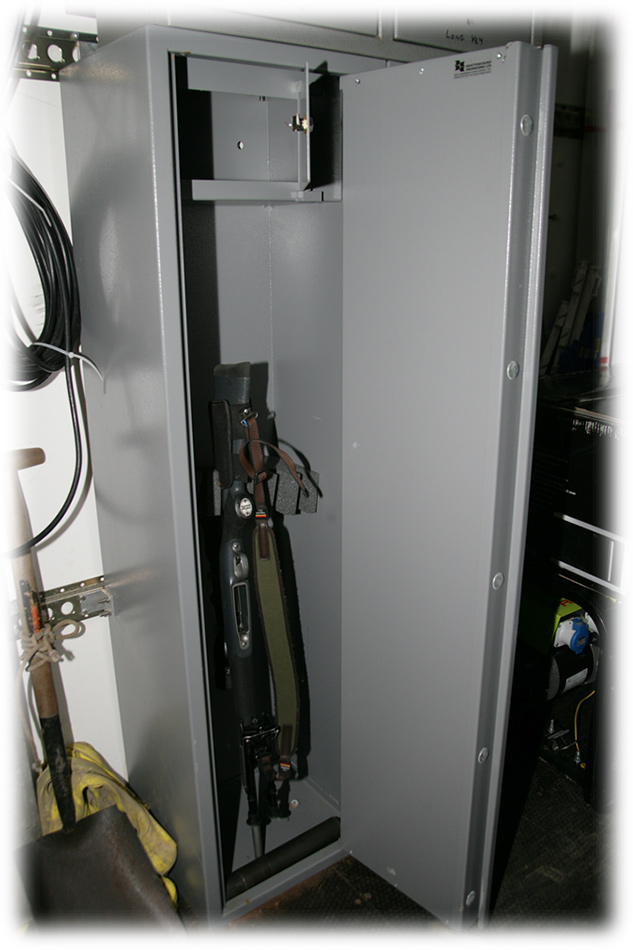
a security chain is anchored to a secure point in the vehicle using a locking device passing through the trigger mechanism
(inside the rifle case, the locking device passes through the trigger mechanism and secured to the vehicle)
Aim
The aim is to ensure that Section 1 firearms and ammunition and Section 2 shotguns are stored and transported securely to prevent, sor far is reasonably practicable, unauthorised people taking or using them
Security
Security of your firearms and ammunition is your responsibility
- Ensure that you are in possession of a valid Firearms Certificate which covers all firearms and ammunition in your possession.
- Ensure firearms and ammunition are stored in accordance with the conditions of your Firearm Certificate*.
- Only allow individuals authorised to posses your firearm to have access to it.
- Ensure that your Firearms Certificate is secure when not in use. Ensure you can produce your Firearms Certificate if requested by the Police, when carrying your firearms.

the security chain should be anchored to a secure point in the vehicle, and the firearm kept out of sight
Methods of securing firearms
The law does not prescribe how “firearms” (Section 1 Firearms and Section 2 Shotguns) and ammunition must be kept securely. When considering applications for firearms or shotgun certificates, the police will look at the circumstances of each case and at overall security arrangements, including the security of the premises where the firearms and ammunition are kept. Detailed guidance is available from the Home Office1

gun cupboard fitted with separate lockable compartment
- Any cabinets used for storing firearms, component parts or ammunition should conform to British standard BS 7558.
- In certain cases, where only one firearm is held, a gun clamp may be used alongside a lockable metal container for bolt and ammunition.
- Keep the keys in a safe location known only to the FAC holder.
- When in shared storage, secure individual firearms by removal and retention of the bolt and lock with a trigger lock or other security device to prevent unauthorised access to your firearm by others.
- When staying in a hotel or guesthouse, firearms may be stored safe in a cabinet on the premises to which only you have access. If this is not available, then use a security chain anchored to a secure point.
- Ensure rifle bolts and magazines are secured separately.
Ammunition
- Ensure that Section 1 ammunition is stored and transported securely to prevent unauthorised access.
- It should be stored within a separate secure compartment within a gun cabinet or kept separately in a locked container (such as the glove compartment of a vehicle).
Storage conditions
- Due to their unlined steel construction, gun cabinets are not the best environment for rust protection of Firearms. To protect firearms from rust, install the cabinet in a warm area of the property and add silica damp absorption bags.
- Ensure that rifles are dry, clean and lightly oiled prior to being put in a cabinet*.
- For long-term storage of firearms, make sure that they are clean, and then oil the bores and metalwork.
- Sound moderators and muzzle breaks should be removed before storage. This is to maintain condition of the moderator, prevent adhesion to the barrel treading and to prevent rusting damage to the crown and barrel.
- Make sure that all oil in the bores is removed prior to use.
- Store firearms in a cabinet barrel downwards, as this stops oil in the bore and mechanism from draining into the head of the stock, thereby potentially rotting the wood.
- Check stored firearms occasionally, to ensure that they are not rusting.
Transport
Remember that the onus is on the owner of the Firearm to know the law. For further information contact your local Police Firearms Licensing Department.
Firearms Law — Guidance to the Police 2002 is a useful Home Office publication1.
- After being transported, check accuracy before shooting at a live target.
- Use robust containers that provide security and protection.
Consider insuring insure your firearms against loss or damage.
Vehicle
- Ensure that firearms are in a suitable container, preferably secured to the vehicle
The Home Office recommend fitting an immobiliser. - Beware of the damage caused by the movement of the vehicle.
- When stopping to refuel etc, make sure the vehicle is locked, firearms are secured to the vehicle out of sight, and take the bolt and FAC with you.
Visitors permits
- If you intend to take firearms to another EU Country, ensure you have a European Firearms Pass, available from your Firearms Licensing Office. Visitors to Great Britain require a Visitor’s Firearm Permit.
Air, Sea, Rail
Airlines may require much longer to check-in with a firearm, if they accept them at all.
- Check with the airline at the time of booking the requirements for Firearms and Ammunition transportation, including relevant paperwork and insurance.
